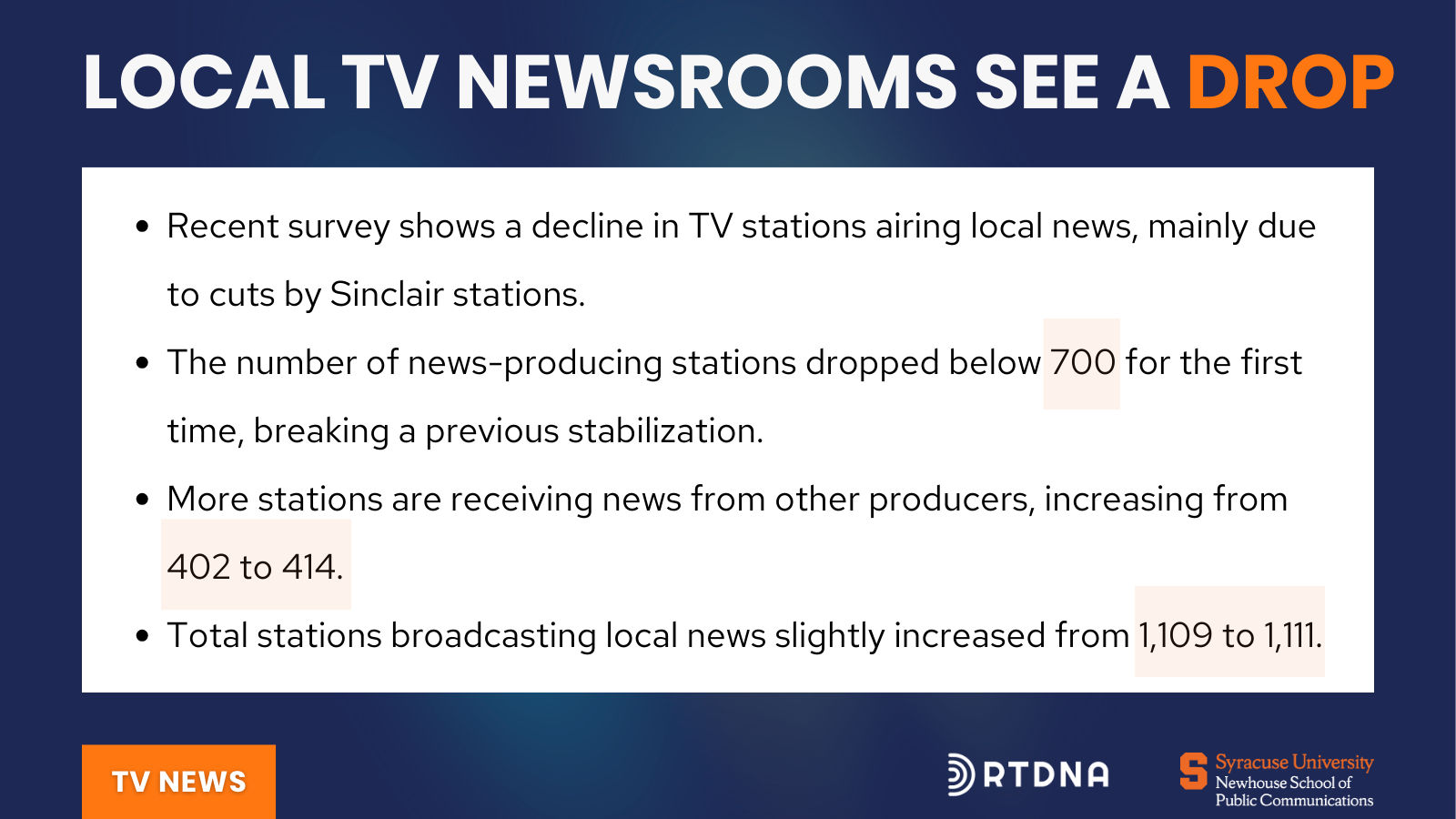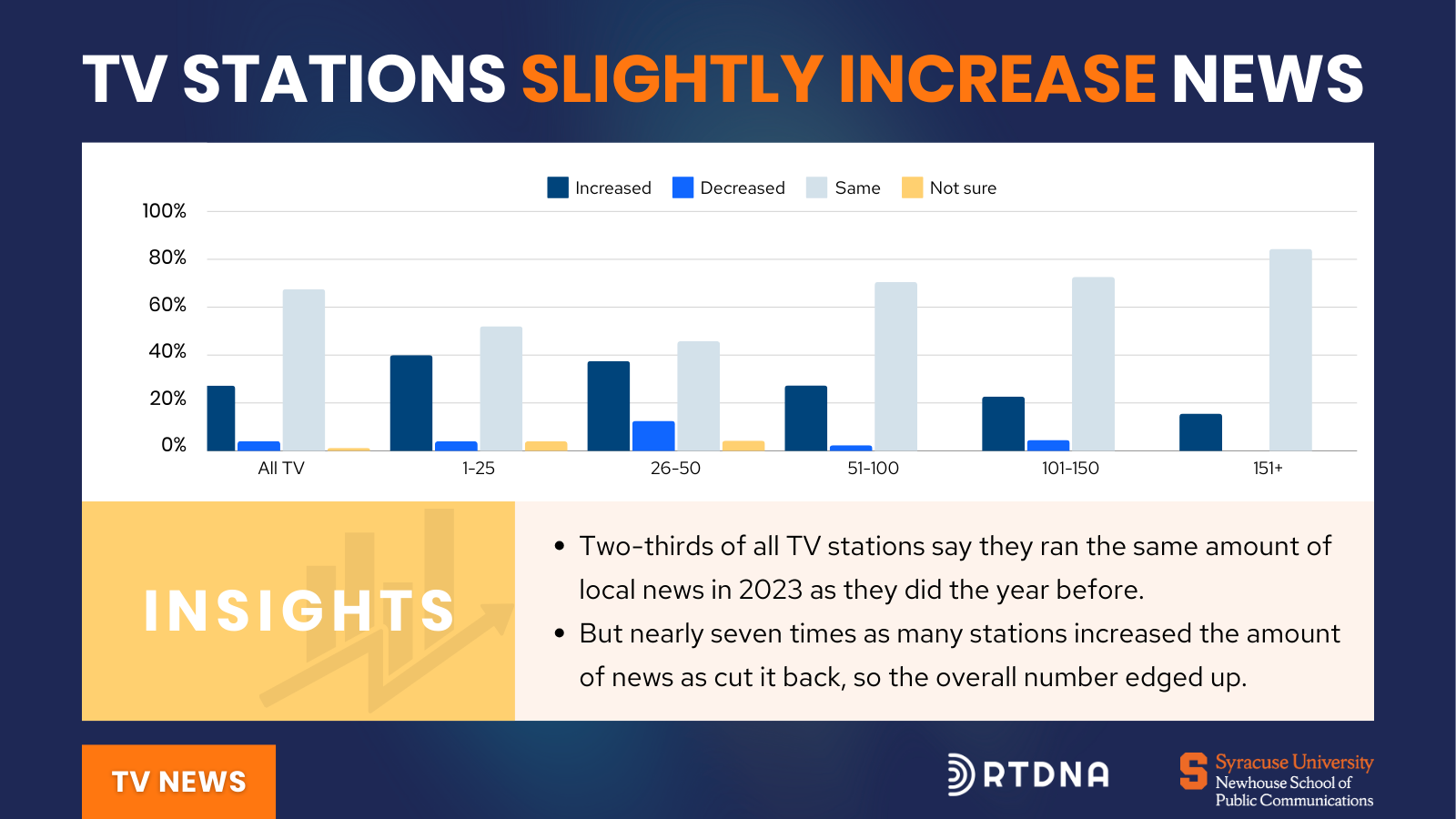Another record amount of local TV news

By Bob Papper and Keren Henderson
July 31, 2024 — According to the latest RTDNA/Newhouse School at Syracuse University Survey, there is a record high amount of local news. The median amount is up by six minutes per weekday, and the average is up by half an hour. The medians stayed the same on the weekend. So did the Sunday average, but the Saturday average rose by six minutes. Overall, the average amount of local news per week is up by 36 minutes and the median is up by 150 minutes per week; however, it’s another record high.

Unlike past years, there was really no consistent pattern on which markets or staff sizes or geographic areas are up, down or stayed the same. The closest thing we have to a pattern is the cutback of local news on the relatively few public TV stations that run local news. We found no public TV station running more than half an hour of local news per weekday, and all local news on the weekend disappeared.

Two-thirds of all TV stations say they ran the same amount of local news in 2023 as they did the year before. But nearly seven times as many stations increased the amount of news as cut it back, so the overall number edged up.
The percentage of stations intending to introduce news this year dropped by 11 points compared to the previous year, with most of that difference resulting in “little or no change.” The biggest drop in percentage planning to add local news is in the top 25 markets — but all market sizes are down from a year ago.
About the Authors
Bob Papper is Research Professor of Broadcast and Digital Journalism at Syracuse University and has worked extensively in radio and TV news.
Keren Henderson is Associate Professor of Broadcast and Digital Journalism at Syracuse University.
This research was supported by the S. I. Newhouse School of Public Communications at Syracuse University and the Radio Television Digital News Association.
About the Survey
The RTDNA/Newhouse School at Syracuse University Survey was conducted in the fourth quarter of 2023 among all 1,876 operating, non-satellite television stations and a random sample of 4,764 radio stations. The television response rate is different for every question, but Valid responses came from as many as 1,387 television stations (73.9%) and 631 radio news directors and general managers representing 1,902 radio stations. Some data sets (e.g. the number of TV stations originating local news, getting news from others and women TV news directors) are based on a complete census and are not projected from a smaller sample.
